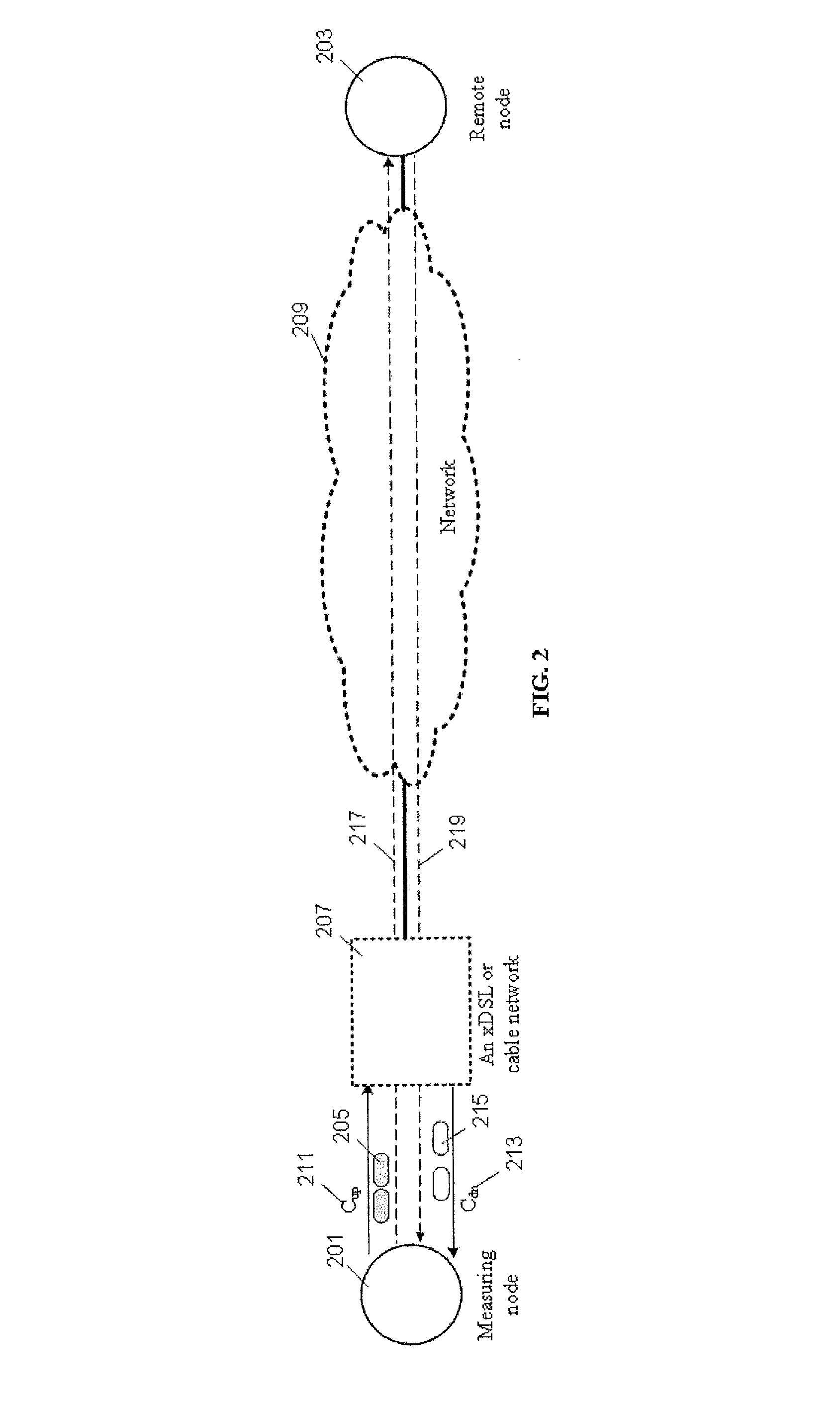Method for measurement of asymmetric network capacities
a network capacity and asymmetric technology, applied in the field of asymmetric network capacity measurement, can solve the problems of difficult measurement of network paths with asymmetric capacity, impractical measurement with arbitrary remote nodes, and limited utility of packet size restrictions, so as to eliminate measurement limitations and accurate results
- Summary
- Abstract
- Description
- Claims
- Application Information
AI Technical Summary
Benefits of technology
Problems solved by technology
Method used
Image
Examples
Embodiment Construction
[0036]An Overview
[0037]FIG. 1 is a block diagram illustrating a particular embodiment in accordance with the present invention. It comprises a measuring node 101 and a remote node 103. The measuring node 101 sends a 1-RTP with two back-to-back probe packets 127 and 129 to the remote node 103 through a network 105 which usually includes multiple hops (such as, routers and switches). The remote node 103, in response to receiving probe packet 127, sends a response packet 135 to the measuring node 101; and in response to receiving probe packet 129, sends a response packet 137 to the measuring node 101. After receiving the response packets 135 and 137, the measuring node 101 sends a (1,1)-TWP with two back-to-back probe packets 131 and 133 to the remote node 103 through the network 105; and the remote node 103, after receiving both 131 and 133, sends two back-to-back response packets 139 and 141 to the measuring node 101. There are n (where n≧4) nodes, including the measuring node 101 an...
PUM
 Login to View More
Login to View More Abstract
Description
Claims
Application Information
 Login to View More
Login to View More - R&D
- Intellectual Property
- Life Sciences
- Materials
- Tech Scout
- Unparalleled Data Quality
- Higher Quality Content
- 60% Fewer Hallucinations
Browse by: Latest US Patents, China's latest patents, Technical Efficacy Thesaurus, Application Domain, Technology Topic, Popular Technical Reports.
© 2025 PatSnap. All rights reserved.Legal|Privacy policy|Modern Slavery Act Transparency Statement|Sitemap|About US| Contact US: help@patsnap.com



